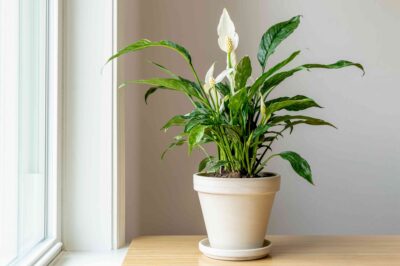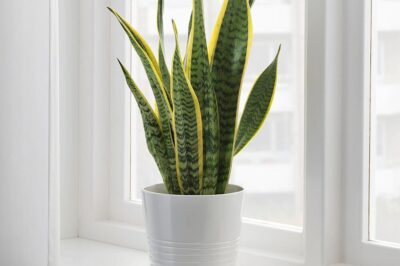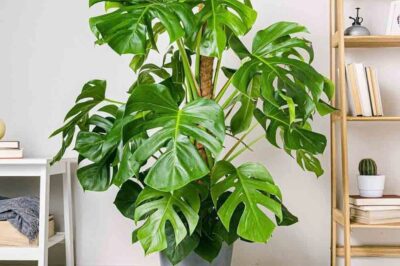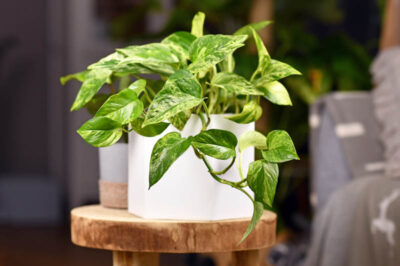The ZZ Plant (Zamioculcas zamiifolia), with its glossy, upright leaves, is a nearly indestructible houseplant that’s perfect for beginners and busy plant parents. Known for its resilience and sleek, modern look, this low-maintenance gem thrives in almost any indoor setting. Discover the secrets to growing a vibrant ZZ Plant with this easy care guide!
Why Choose a ZZ Plant?
Virtually Unkillable: Tolerates neglect, low light, and irregular watering.
Air Purification: Filters indoor air, improving your home’s environment.
Sleek Aesthetic: Adds a touch of elegance to desks, shelves, or corners.
Slow Growth: Requires minimal repotting, ideal for small spaces.
Step-by-Step Guide to Growing a ZZ Plant
1. Pick the Perfect Light
ZZ Plants thrive in low to bright indirect light, making them ideal for dimly lit rooms or offices. While they can handle low light, moderate indirect light encourages faster growth. Avoid direct sunlight, which can scorch the leaves.
Tip: Rotate the plant occasionally for even growth.
2. Use Well-Draining Soil
Plant your ZZ in a well-draining potting mix, such as a cactus or succulent blend with added perlite. This prevents water from sitting around the roots, which can cause rot.
Pro Tip: A pot with drainage holes is a must to keep roots healthy.
3. Water Sparingly
Water only when the soil is completely dry, typically every 2-4 weeks, depending on light and humidity. ZZ Plants store water in their rhizomes, so they’re drought-tolerant. Overwatering is the biggest mistake to avoid.
Signs of Overwatering: Yellowing leaves or soft, mushy stems.
Signs of Underwatering: Wrinkled or drooping leaves (rare).
4. Keep Temperature and Humidity Flexible
ZZ Plants prefer temperatures between 65-85°F (18-29°C) and adapt to average household humidity. They don’t need misting or extra humidity, making them fuss-free.
Avoid: Placing near cold drafts or heating vents, which can stress the plant.
5. Fertilize Rarely
Feed your ZZ Plant with a diluted liquid fertilizer (e.g., 10-10-10) once or twice during spring and summer. Overfertilizing can harm this slow grower, so less is more.
6. Prune for Tidiness
Trim yellow or damaged leaves at the base to keep the plant looking sharp. ZZ Plants rarely need heavy pruning due to their slow, compact growth.
7. Propagate ZZ Plant
Propagating ZZ Plants is simple but requires patience:
Cut a leaf or stem with a small section of the rhizome.
Place in water or well-draining soil.
Keep in indirect light, changing water weekly (if in water).
Roots may take 1-2 months to form. Transplant to soil once established.
Common Problems and Fixes
Yellow Leaves: Usually from overwatering. Let the soil dry out completely before watering again.
Slow Growth: Normal for ZZ Plants, especially in low light. Move to brighter indirect light for a boost.
Pests: Rare, but mealybugs or spider mites may appear. Treat with neem oil or soapy water.
FAQs About ZZ Plant
Is ZZ Plant toxic?
Yes, it’s toxic to pets and humans if ingested. Keep it out of reach of children and animals.
How fast does a ZZ Plant grow?
It’s a slow grower, adding a few inches per year under ideal conditions.
Can ZZ Plant survive in no light?
It can survive in very low light but grows best with some indirect light.
Conclusion
The ZZ Plant is the ultimate low-effort, high-reward houseplant, perfect for anyone seeking a stylish, resilient addition to their home. With minimal watering, flexible light needs, and a knack for surviving neglect, it’s a plant lover’s dream. Unlock the secret to a thriving ZZ Plant today and enjoy its glossy beauty year-round!
Keywords: ZZ Plant, Zamioculcas zamiifolia, ZZ Plant care guide, low-maintenance houseplant, propagate ZZ Plant
News
How to Grow Peace Lily: A Complete Care Guide
The Peace Lily (Spathiphyllum) is a beloved houseplant known for its elegant white blooms and lush green foliage. Its air-purifying…
How to Grow Snake Plant: The Ultimate Care Guide
Snake Plant, or Sansevieria, is a tough, low-maintenance houseplant known for its long, upright, sword-like leaves. With its striking green…
How to Grow Mint at Home: A Complete Beginner’s Guide
Discover how to grow mint at home in pots or gardens. This easy guide covers planting, care, and harvesting tips…
How to Grow Monstera Deliciosa: A Complete Care Guide
Monstera Deliciosa, often called the Swiss Cheese Plant, is a tropical beauty known for its large, heart-shaped leaves with unique…
How to Grow Tomatoes at Home: Easy Guide for Juicy, Healthy Tomatoes
Want to grow tomatoes at home? Learn how to plant, care for, and harvest juicy tomatoes with this step-by-step gardening…
How to Grow Pothos Marble Queen: A Beginner’s Guide
Pothos ‘Marble Queen,’ also known as Epipremnum aureum ‘Marble Queen,’ is a stunning houseplant with heart-shaped, variegated leaves featuring creamy…
End of content
No more pages to load












